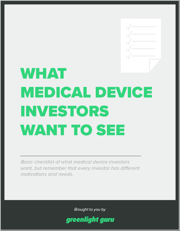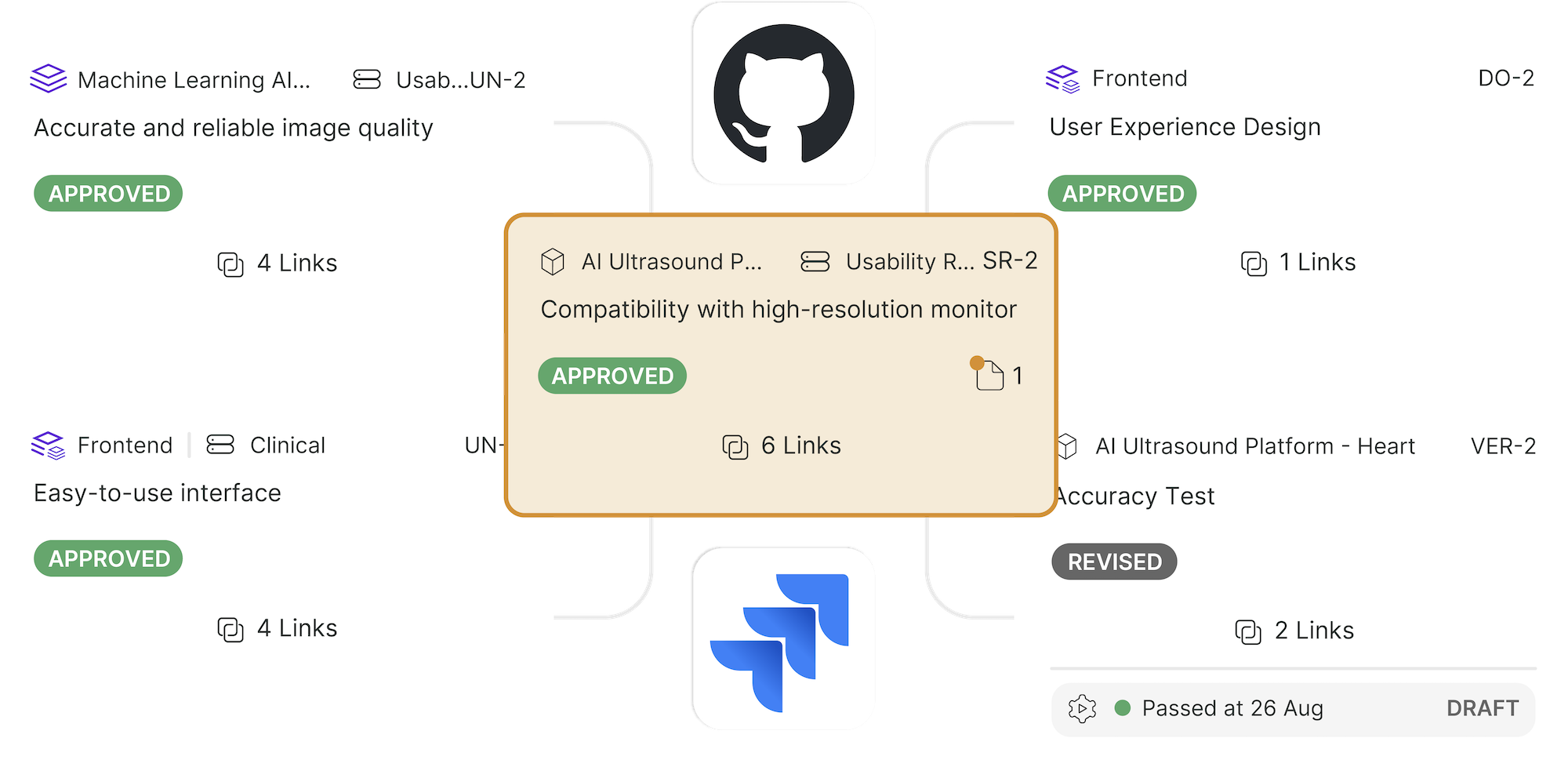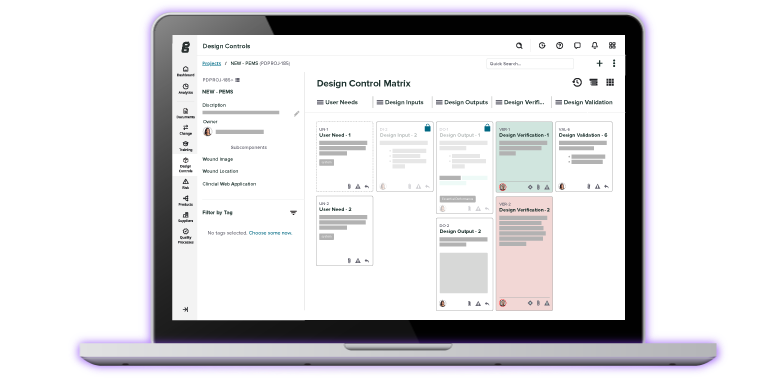5 mistakes to avoid when seeking funding for your medical device

When it comes to getting funding for an early-stage medical device company, most founders tend to focus on the strengths of their device and its design. That’s what they know and that’s what they believe will sell investors on their business.
But design isn’t everything. Regulatory strategy and operational acumen—in other words, how this device will get to market—also matter a great deal to investors. And those are the areas where it’s easy to make mistakes when your business is still in the early stages.
For this article, we spoke to three industry experts about their experiences with fundraising and asked them about the pitfalls they’ve seen medical device companies fall into when raising money.
Here’s what they told us to avoid.
1. Making top-down market assessments
Most founders have a good idea of who the target market for this device is, as well as the size of that market. But these initial back-of-the-napkin forecasts are often inaccurate, and that can have significant effects on your funding.
Aaron Call is the founding principal of Jaunt, a management consulting firm that helps medical device companies secure funding. Over the years, he’s seen plenty of medical device companies perform inaccurate top-down forecasts that came back to bite them:
These entrepreneurs assess their market size and how they believe their product will perform (typically very well), and then create a top-down assessment showing incredible revenue growth. The problem with this model is that there is no actual proof that any of the assumptions are correct, from the size of the opportunity in the market to the amount of adoption the product will see.
Instead of making broad assumptions and working down, founders would be better off speaking with their target end users and working up from there:
Use comprehensive research and analysis to understand the behaviors of the target individuals within that segment and build a bottom-up strategic plan. Investors want to be confident that they are going to put money into your product machine and be assured that they will get a significant profit out. They need to see the market need, the market opportunity, and your plan to tackle both.
Understanding the behaviors, opinions, and needs of your end user will give you invaluable insight into the opportunity that exists for your product. It may be smaller than you initially think, but investors would rather see proof of a moderate-sized market opportunity than a huge forecast based on nothing but hope and excitement.
2. Assuming all investors are the same
Investors ultimately want to make money. But this doesn’t mean all investors are looking for the same thing. Unfortunately, it’s easy to think profitability should be your primary focus when pitching to investors.
In reality, different types of investors will be able to provide different levels of funding—but they will also have different expectations for the returns on their investments.
For example, a venture capital firm may want to invest more and take more equity in the business. They may also have higher expectations for the return on their investment, though they may also be fine with a longer timeline in order to get those returns.
On the other hand, a family office may invest less in the business and expect a lower ROI, but they may want it to happen faster than the VC.
The other thing to consider is the types of companies an investor has worked with before. Is this an investor with a medical device background? Or do they have a SaaS (Software as a Service) background, for instance? Because an investor coming from the software world may want a quicker return. SaaS likes to move fast. Healthcare moves slowly.
The best thing you can do is talk to as many potential investors as possible and have those educational conversations about their expectations and their expertise. Then you can make an informed decision about who to take money from and when to do it.
3. Oversimplifying the regulatory process
Most startups are concerned with the product first and foremost. There’s often a sense that if they build a great device, the rest of the pieces will fall into place naturally.
However, this can lead to overconfidence, especially when it comes to regulatory affairs. Even for lower risk devices, the regulatory process is rarely simple, and presenting it that way can dent investors’ confidence in your knowledge and ability to get your product to market.
Kevin Coker, CEO of Proxima Clinical Research, works closely with hundreds of device manufacturers and says he regularly sees this issue.
“One of the biggest mistakes we see is oversimplifying the regulatory process,” Coker says. “This usually manifests in a single investor slide, typically toward the end with a very simple GANTT chart that shows the company applying for FDA submission (usually in the next few months of the date they are speaking).”
Anyone that’s been through the FDA approval process before knows it’s complex at best, and unpredictable and bumpy at worst. The last thing you want is to tell investors you’ll be launching by a certain date, only to turn around and revise that schedule when you run into trouble.
“Going through the FDA is tough regardless of how simple the device is,” Coker says. “Investors are smart. They will ask questions.”
Don’t bluff your way through explaining the regulatory process. Conduct research to form a detailed, reliable road map for securing regulatory approval.
“Hubris is the wrong strategy at this stage of the pitch,” Coker says. “Arrive at your fundraising opportunity prepared to speak extensively on the details of the [regulatory] journey, from concept to regulatory approval to the complete path to market.”
4. Ignoring FDA pre-submission
Investors want to see you’re taking the process seriously and have a device that will actually make it to market. One of the best ways to demonstrate your ability to get to market is by using the FDA’s pre-submission program. The pre-sub process allows medical device companies to meet with the FDA prior to their submission and begin building a relationship and charting a path toward 510(k) clearance or other applicable pathways.
During the pre-submission process, manufacturers work with an FDA representative to see if the device is headed in the right direction for approval. This meeting helps companies understand exactly what the FDA will expect to see in their submission, and it’s a great way to reduce the chance of any surprises later on.
The pre-sub process doesn’t guarantee approval, but it does help companies better prepare for their submission, and it’s a concrete action you can point to when an investor asks about your regulatory plan and the steps you’re taking to ensure your product makes it to market.
5. Failing to see actual customers
Ronny Bracken is an R&D executive and principal at Paladin Biomedical Consultants, where he’s worked with numerous medical device companies. Ronny’s seen this above mistake play out numerous times in his line of work:
“Understand what the customer wants, because chances are you'll understand whether you got the right product or not, or the right technology or not,” he shared with listeners on an episode of the Global Medical Device Podcast.
The issue of failing to see your customers carries two major ramifications: time and money wasted. On the flip side, the solution is two-pronged.
First, take a hard look at the people buying your product—not just the patients using your product. Knowing your audience, the people buying the product, allows you to craft a product they want. This information also allows you to signal to investors that you’re creating a product with a marketable audience that you’ve properly researched.
“Hospitals, care providers, and insurance companies are the ones you truly need to sell to,” says Bracken. “Figure this out as early as possible.”
Once you understand this audience and what they’re looking for, take a hard look at your product. If your device doesn’t meet their needs, it’s time to consider stepping away before you dive into the rabbit hole of funding.
“You need to cut bait early if you don't think that you've got something there,” Bracken says. “Otherwise, all you're going to do is burn up all your money.”
Nobody wants to fail. But if you’re going to fail, it’s best to do it early, while you still have more time and money available. Trying to secure funding for a device that has little to no demand can be expensive and damaging to your reputation.
And remember, failure is a great teacher. You may scrap a product early on and use the lessons from that experience to build a viable medical device in the future.
Take steps to secure funding for your medical device with Greenlight Guru
Investors are looking for more than just a great design from medical device companies. They also want to see that you have a pragmatic and realistic view of the market, your device, and your regulatory pathway. They’re not just examining your device; they want to know if you and your team have the knowledge and ability to get this device to market.
And one of the best ways to show them you’re ready for an investment is by having an airtight QMS that keeps your business organized, compliant, and adaptable to any challenge you may face.
We built Greenlight Guru Quality to be that QMS solution for any medical device company. Our QMS software comes aligned with the latest medical device industry regulations and standards, and it’s backed by a customer success team full of experienced medical device professionals.
Ready to see how a MedTech-specific QMS can help take your business to the next level? Then get your free demo of Greenlight Guru today →
Etienne Nichols is the Head of Industry Insights & Education at Greenlight Guru. As a Mechanical Engineer and Medical Device Guru, he specializes in simplifying complex ideas, teaching system integration, and connecting industry leaders. While hosting the Global Medical Device Podcast, Etienne has led over 200...










